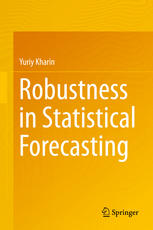

Most ebook files are in PDF format, so you can easily read them using various software such as Foxit Reader or directly on the Google Chrome browser.
Some ebook files are released by publishers in other formats such as .awz, .mobi, .epub, .fb2, etc. You may need to install specific software to read these formats on mobile/PC, such as Calibre.
Please read the tutorial at this link: https://ebookbell.com/faq
We offer FREE conversion to the popular formats you request; however, this may take some time. Therefore, right after payment, please email us, and we will try to provide the service as quickly as possible.
For some exceptional file formats or broken links (if any), please refrain from opening any disputes. Instead, email us first, and we will try to assist within a maximum of 6 hours.
EbookBell Team

4.4
92 reviewsTraditional procedures in the statistical forecasting of time series, which are proved to be optimal under the hypothetical model, are often not robust under relatively small distortions (misspecification, outliers, missing values, etc.), leading to actual forecast risks (mean square errors of prediction) that are much higher than the theoretical values. This monograph fills a gap in the literature on robustness in statistical forecasting, offering solutions to the following topical problems:
- developing mathematical models and descriptions of typical distortions in applied forecasting problems;
- evaluating the robustness for traditional forecasting procedures under distortions;
- obtaining the maximal distortion levels that allow the “safe” use of the traditional forecasting algorithms;
- creating new robust forecasting procedures to arrive at risks that are less sensitive to definite distortion types.